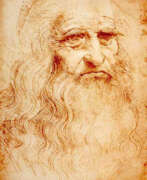Inventors 16th century


Leonardo da Vinci was an Italian polymath of the High Renaissance, celebrated as a painter, draughtsman, engineer, scientist, theorist, sculptor, and architect. His remarkable abilities and innovative thinking made him an epitome of the Renaissance humanist ideal. Born in Vinci, near Florence, in 1452, Leonardo was educated in Florence by Andrea del Verrocchio, a renowned painter and sculptor. He began his career in Florence, later working in Milan, Rome, and France, where he died in 1519.
Da Vinci is revered for his artistic mastery, technological innovation, and scientific inquiry. Despite having fewer than 25 major works attributed to him, including several unfinished ones, his influence on Western art is profound. His magnum opus, the "Mona Lisa," housed in the Louvre Museum, Paris, is considered the world's most famous painting. "The Last Supper," his most reproduced religious painting, showcases his mastery of dramatic narrative and pictorial illusionism. Both paintings exhibit Leonardo's unique ability to convey complex human emotions and his innovative use of techniques like sfumato and chiaroscuro.
Leonardo's interests extended far beyond fine art. He was a visionary in multiple fields, including anatomy, physics, architecture, and mechanics. His notebooks reveal designs for machines like bicycles, helicopters, and military tanks, centuries ahead of their time. However, due to his diverse interests, he left many projects and paintings incomplete. Leonardo's final years were spent in France, where he continued his artistic and scientific pursuits until his death.
For collectors and experts in art and antiques, Leonardo da Vinci remains a figure of endless fascination. His works not only embody the pinnacle of Renaissance art but also provide insights into the era's scientific and philosophical inquiry. To stay updated on new sales and auction events related to Leonardo da Vinci, sign up for our newsletter. This subscription is a gateway to exploring the rich legacy of this unparalleled artist and inventor.


Marin le Bourgeoys was a distinguished French artist and inventor, renowned for his creation of the flintlock mechanism that revolutionized firearms for over two centuries. Born into an esteemed artisan family in Lisieux, Normandy, le Bourgeoys was initially trained as a painter, later gaining acclaim as a gunsmith, inventor, and luthier.
His talents soon caught the eye of royalty; in 1598, King Henry IV appointed him "Valet de Chambre" at the Royal Court, a testament to his esteemed position in the realms of art and innovation. Le Bourgeoys' ingenuity extended beyond the court; his flintlock mechanism, invented in the early seventeenth century, was a pivotal development in firearm technology. This mechanism featured a striking device that, when the trigger was pulled, would hit a firing pin to ignite the primer in the gun cartridge, a design so advanced that it remained in use for over two centuries.
As an artist, le Bourgeoys' work was not limited to the functional; he was also a creator of luxury items, a clock-maker, and embodied the spirit of an educated Renaissance humanist thriving in cultivated circles. His legacy in the art world is marked by works such as the portrait of Henri IV, which was recently acquired by the Musée de l'Armée, signifying the lasting appreciation of his artistic prowess.
For collectors, auctioneers, and experts in art and antiques, Marin le Bourgeoys' contributions to both art and firearm technology present a rich tapestry of historical and cultural significance. To stay informed on updates and discoveries related to Marin le Bourgeoys, sign up for our exclusive newsletter.


Agostino Ramelli was an Italian military engineer and mechanic who worked in the fields of fortification and practical mechanics.
Ramelli studied mathematics, mechanics, and engineering under Giacomo di Marignano, who is considered a disciple of Leonardo da Vinci. He first showed his talents as a mechanic during Louis XIII's military campaign by constructing a mine under a bastion.
Ramelli invented many mechanisms that impressed his contemporaries, including their special aesthetic appeal. His most popular creation is the so-called Ramelli Book Wheel, a rotating reading table. Agostino Ramelli positioned his invention as a sleek design that allowed access to several books without having to get up from his seat.
Ramelli wrote and illustrated a book of engineering projects, Le various et artificiose machine ("Various and Artificial Machines"). The book contains 195 designs, over 100 of which are water-lifting machines, such as water pumps or wells, as well as bridges, mills, and so on. This very interesting book for our contemporaries is still published and is still in demand.









